Southern Forest Ownership
Protected areas are an important foundation for sustaining southern forest ecosystem services. Expanding protected areas and increasing their protected status will be an important strategy going forward, particularly given that some ecosystems such as bottomland hardwood forests and coastal wetland forests are underrepresented within the current network. In light of forest ownership in the region, however, the government-owned, protected areas strategy will need to be complemented by other measures. Approximately 87 percent of southern forest acreage is currently privately held, an ownership pattern quite different from that of U.S. forests as a whole (Figure 5.4). To a large degree, the future of southern forests thus rests in the hands of private landowners.
Twenty-seven percent of the region’s forest acreage is owned by private companies. In the past, these companies were primarily integrated industrial forest product firms, but increasingly corporate forest ownership has become dominated by real estate investment trusts and timber investment management organizations (Box 5.2). Corporate ownership is particularly concentrated along the Atlantic Coast, the Gulf Coast, and in forested areas west of the Mississippi River (Figure 5.5).
Private non-corporate entities, often called “non-industrial private forest” (NIPF) owners, own 60 percent of southern forests. This category of owner includes individuals, families, and nongovernmental organizations. Family forests comprise most of this land, about 57 percent of total southern forest acreage (Butler 2008). Most family forests are small tracts, with nearly 3 million owners each holding 9 acres or less in 2006 (Figure 5.6).
Private, non-corporate forests are typically considered part of personal or family wealth and, according to a recent survey, confer a variety of benefits to their owners (Figure 5.7). Cultural services such as aesthetic enjoyment, the rewards of conserving biodiversity, and various forms of recreation were commonly noted by surveyed family forest owners. Provisioning services such as the generation of timber, pulpwood, and biomass fuel were also noted. Going forward, a significant majority of family forest owners surveyed aspire to maintain their forests with no or minimal change—these were the top three responses—while some seek to maintain their forests while harvesting firewood, sawlogs, or pulpwood—the fifth and sixth responses (Figure 5.8). A much smaller share of respondents wish to convert their forests to other uses or to subdivide their land.
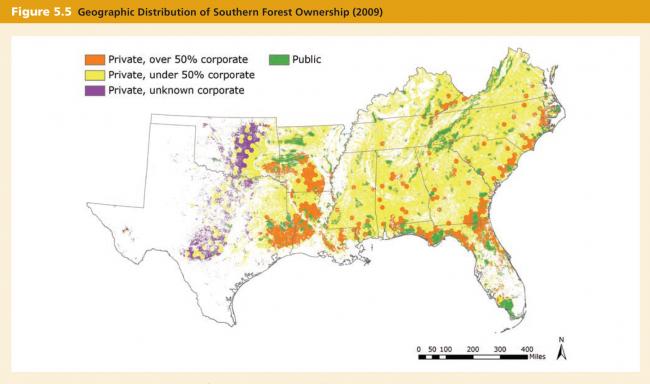 Source: Forest ownership (USDA Forest Service FIA, 2009), administrative boundaries (ESRI Data and Maps 9.3.1, ESRI 2008).
Note: Private, unknown corporate are the areas where data for percent corporate are not available.
Source: Forest ownership (USDA Forest Service FIA, 2009), administrative boundaries (ESRI Data and Maps 9.3.1, ESRI 2008).
Note: Private, unknown corporate are the areas where data for percent corporate are not available.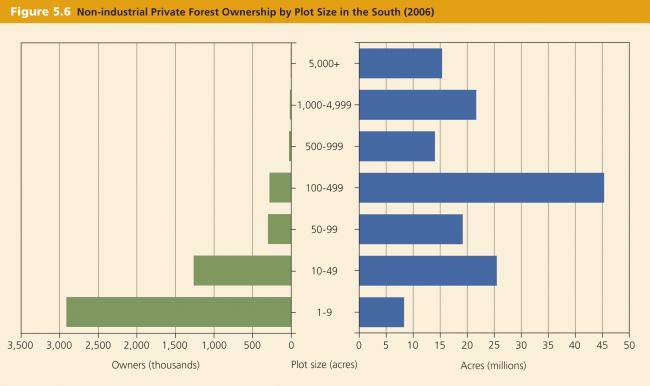 Source: Butler 2008.
Note: Categories are not exclusive. Data do not display non-respondents.
Source: Butler 2008.
Note: Categories are not exclusive. Data do not display non-respondents.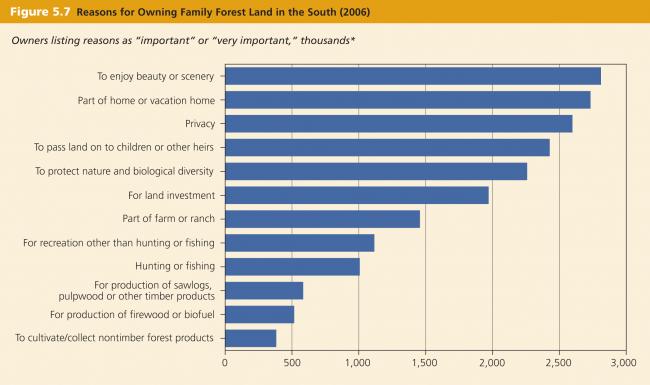 *Categories are not exclusive. Does not display non-respondents.
Source: Butler 2008.
*Categories are not exclusive. Does not display non-respondents.
Source: Butler 2008.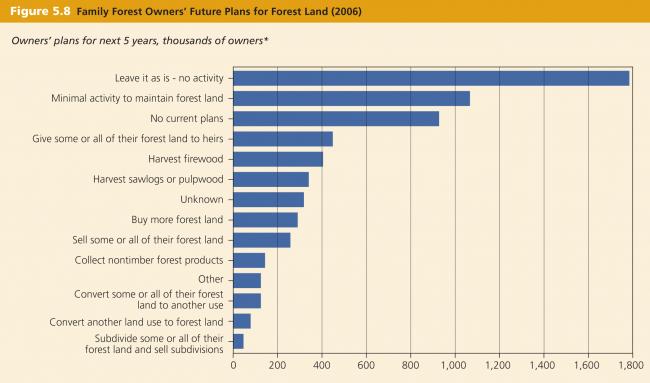 *Categories are not exclusive. Does not display non-respondents.
Source: Butler 2008.
*Categories are not exclusive. Does not display non-respondents.
Source: Butler 2008.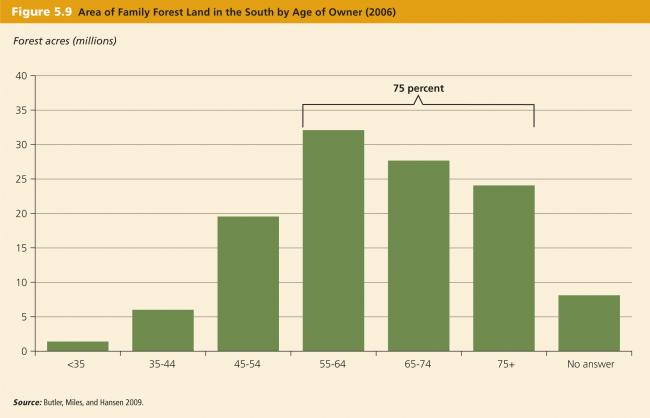 *Categories are not exclusive. Does not display non-respondents.
Source: Butler 2008.
*Categories are not exclusive. Does not display non-respondents.
Source: Butler 2008.


